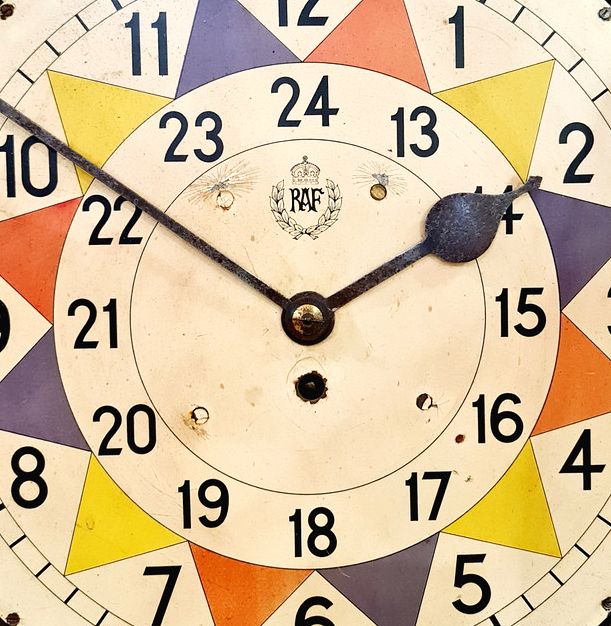What is a sector clock I hear you ask…
Originally created in 1917, the Royal Flying Corp (which would become the Royal Air Force on 1st April 1918) used ‘colour change clocks’ as a means to track and incept enemy aircraft. During the Second World War and perhaps most noticeably during the Battle of Britain, these clocks were used in Operations Rooms across the country playing a fundamental part of ground-controlled interception.
During the inter-war years, alongside the introduction of radar in 1936, Britain’s Air Defence was expanded and significantly enhanced by commander-in-chief of Fighter Command Air Chief Marshal Lord Dowding. He set about developing an integrated air defence system, which would be the first of its kind anywhere in the world.
During the Battle of Britain, his system (often referred to as the Dowding System) would take information gathered from radar stations, radio direction finding stations, The Royal Observer Corps (ROC) and Observer Corp Centres. The information would then be assessed and plotted on a large central table map with an overlaid grid by members of the Women’s Auxiliary Air Force (WAAF). These women were known as plotters, often wearing a set of headphones, they would plot the information given using wooden block counters with card inserts that would be pushed around the map. The blocks showed the name of the raid and an estimate of its strength, arrows would be placed behind each block to show the raid’s direction.
These blocks were coloured red, yellow and blue and would correspond with the triangular sections repeated all the way around the dial of the clock as to note when they were received. The outer dial had a 12hr chapter ring and the inner a 24hr. The colour the counter was given was based on the colour the minute hand was on when the report was received. These five-minute sections made it possible to track and plot the path of an incoming enemy raid and the colour used would show how current the information was. The simplicity of the system allowed decisions to be made quickly.
These clocks continued to by used by the RAF and the ROC as simple clocks and keep safes during and long after the war had ended.
Fieldings Were delighted to sell this wonderful piece of WWII history in our January Sale, with a selling price of £3,100
Lot 662
An RAF operations room sector wall clock, the single-fusee movement stamped to the backplate 17037, Made by F.W Elliot, 1941, the 14in dial with black Roman numerals with inner 24-hr chapter ring with alternate red, yellow and blue triangular sector markings, RAF ‘King’s Crown’ warrant officer’s insignia to the centre and shaped steel hands, all within a varnished mahogany case with black stained bezel, chalked to the inside 8/10/51, lacks pendulum.
Posted on 20 January 2021
Be in the know
Sign up for auction email alerts so you never miss another sale at Fieldings!
Register now

